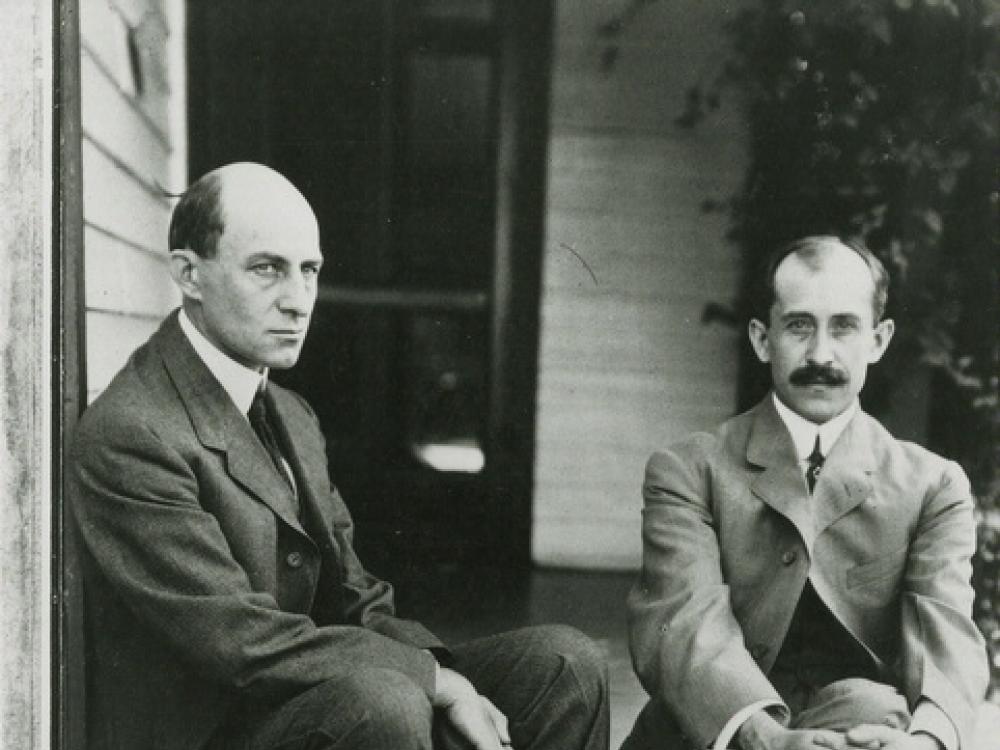When the topic of aviation and flight arises, few names carry as much weight and significance as The Wright Brothers. Wilbur and Orville Wright, two brothers from Dayton, Ohio, are credited with accomplishing the first controlled, powered flight in history. Their remarkable achievements forever changed the world, paving the way for the modern age of aviation.
Born in 1867 and 1871, respectively, Wilbur and Orville possessed a deep fascination with mechanics and engineering from an early age. Their curiosity and drive to understand the principles of flight were ignited when their father gifted them a small toy helicopter, sparking their lifelong pursuit of flight. Together, they embarked on a journey that would revolutionize transportation and make their names synonymous with aviation.
The Wright brothers’ journey began with a deep understanding of the work of their predecessors. They studied the experiments and designs of Sir George Cayley, Octave Chanute, and Samuel Langley, among others. Drawing from this knowledge, they began to develop their own theories about flight and aerodynamics. Their commitment to thorough research and meticulous experimentation laid the groundwork for their groundbreaking achievements.
One of the key challenges the Wright brothers faced was achieving controlled flight. Many before them had attempted to achieve sustained and controlled flight, but none had succeeded. Wilbur and Orville realized that the key to success lay in understanding and mastering the three fundamental controls of an aircraft: roll, pitch, and yaw. They developed a revolutionary system of wing warping, which allowed them to control the aircraft’s balance and stability. This breakthrough invention formed the basis of their aircraft designs.
In addition to their innovations in control systems, the Wright brothers recognized the importance of a reliable and lightweight engine for powered flight. They designed and built their own engines, focusing on efficiency and power-to-weight ratio. Their determination to create a suitable engine for their aircraft showcased their ingenuity and resourcefulness.
Years of meticulous research, countless experiments, and a series of glider flights led the Wright brothers to their momentous achievement. On December 17, 1903, at Kitty Hawk, North Carolina, the Wright brothers made history. Orville piloted the Wright Flyer, a biplane with a wingspan of 12.3 meters, while Wilbur looked on. In a flight lasting 12 seconds, the aircraft covered a distance of 36.5 meters. This monumental event marked the first successful powered flight in human history.
The significance of the Wright brothers’ achievement cannot be overstated. Their breakthrough paved the way for rapid advancements in aviation technology and industry. Their innovative designs and control systems influenced subsequent aircraft designs and laid the foundation for modern aircraft. The Wright brothers’ successful flight opened a new chapter in human transportation, transforming the world and making the impossible possible.
After their groundbreaking flight, the Wright brothers continued to refine their designs and further demonstrate the capabilities of their aircraft. They made longer flights, tested new models, and shared their knowledge with other aspiring aviators. Their dedication to the pursuit of flight and their willingness to share their expertise contributed to the rapid progress of aviation in the early 20th century.
Despite their achievements, the Wright brothers faced skepticism and criticism from some quarters. Skeptics demanded more substantial proof and questioned the authenticity of their accomplishments. In response, the Wright brothers conducted public demonstrations, showcasing their aircraft and abilities to skeptics and supporters alike. These demonstrations solidified their reputation and silenced many of their doubters.
As the aviation industry grew, the Wright brothers’ impact continued to resonate. They formed the Wright Company in 1909, becoming the world’s first airplane manufacturers. Their aircraft became highly sought after, and they played an essential role in training pilots and establishing flight schools. The Wright brothers’ contributions extended beyond their own success—they actively shared their knowledge and patented their inventions, making their technology available to other aviation enthusiasts and inventors.
The legacy of the Wright brothers is undeniable. Their groundbreaking achievements in aviation earned them numerous accolades and honors. In 1909, the French government bestowed upon them the Legion of Honor, recognizing their extraordinary contributions to aviation. They also received the Daniel Guggenheim Medal in 1927, further cementing their status as pioneers in the field.
The impact of the Wright brothers’ work reverberated globally. Their achievements inspired countless individuals to pursue careers in aviation and spurred advancements in aircraft design, engineering, and aeronautics. From military aviation to commercial air travel, their breakthroughs set the stage for a new era of human transportation.
To honor the Wright brothers’ contributions, numerous museums and memorials have been established. The National Museum of the United States Air Force in Dayton, Ohio, houses a comprehensive collection dedicated to their achievements. Additionally, the Wright Brothers National Memorial in Kitty Hawk, North Carolina, marks the historic site where their first flight took place. These tributes serve as reminders of the indelible mark left by the Wright brothers on the world of aviation.
The story of the Wright brothers serves as an inspiration for aspiring inventors and innovators. It showcases the power of perseverance, ingenuity, and unwavering determination. Their relentless pursuit of flight in the face of challenges and setbacks exemplifies the spirit of exploration and pushes the boundaries of what is deemed possible.
In conclusion, the impact of The Wright Brothers on aviation is immeasurable. Their pioneering achievements in controlled, powered flight laid the foundation for the aviation industry as we know it today. Through their innovative designs, meticulous research, and unwavering determination, they unlocked the skies and forever transformed human transportation. The Wright brothers’ legacy lives on, inspiring generations of aviators and reminding us of the boundless potential of human ingenuity.
References:
- Howard, Fred. (1987). “Wilbur and Orville: A Biography of the Wright Brothers.”
- Crouch, Tom D. (2003). “The Bishop’s Boys: A Life of Wilbur and Orville Wright.”
- “The Wright Brothers.” National Museum of the United States Air Force.
- “Wright Brothers National Memorial.” National Park Service.


